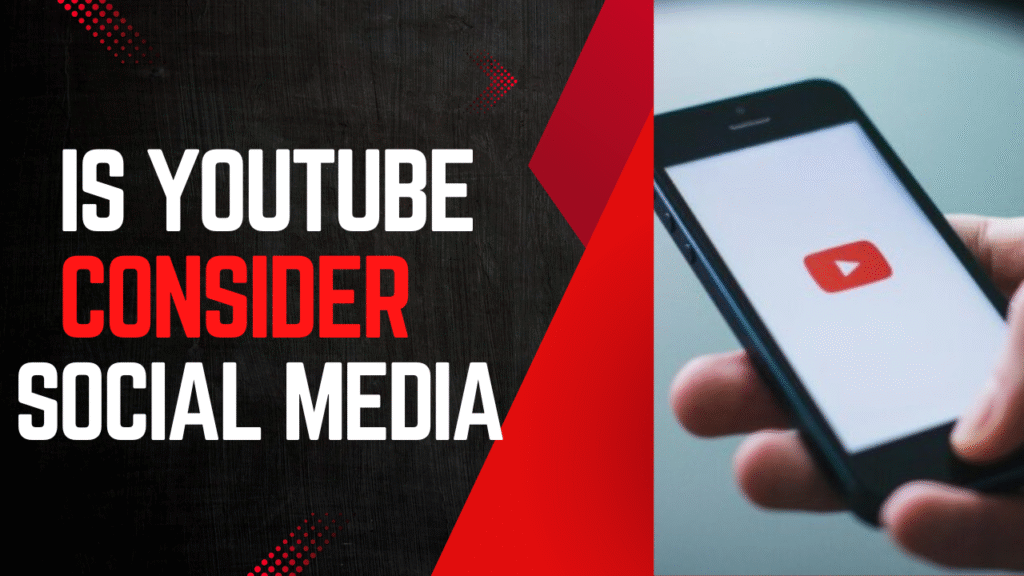Is YouTube Considered Social Media? A Deep Dive into Its Role in the Digital Landscape
In today’s digital age, social media platforms are at the forefront of how we communicate, collaborate, and consume content. One platform that often sparks debate about its classification is YouTube. Launched in 2005 and acquired by Google in 2006, YouTube has evolved from a simple video-sharing site to a complex ecosystem for content creators, viewers, advertisers, and influencers. In this blog, we will explore whether YouTube should be classified as social media and delve into its unique characteristics that align with and differentiate it from traditional social media platforms.
Defining Social Media
Before delving into YouTube’s classification, it’s essential to understand what social media is. Social media refers to online platforms that facilitate the creation, sharing, and exchange of user-generated content. Key features of social media include:
- User Interaction: Allows users to engage with one another through comments, likes, shares, and direct messaging.
- Content Creation: Empowers users to create, share, and distribute various types of content, including text, images, and videos.
- Community Building: Fosters connections and communities based on shared interests, goals, or identities.
- Real-time Communication: Enables instant communication and feedback, making it possible for conversations to flow in real-time.
YouTube: Beyond Video Sharing
Given the definition of social media, let’s examine YouTube through this lens:
- User Interaction:
YouTube allows extensive interaction through comments, likes, dislikes, and subscriptions. Users can communicate directly with content creators, ask questions, express opinions, and share their own views. Additionally, the platform promotes community engagement through features like live streaming and community posts, which allow creators to interact with their audience in real-time. - Content Creation:
YouTube is primarily a platform for video content creation and sharing. Anyone can create, upload, and monetize their videos, providing a unique space for creativity. The platform enables users to showcase their skills, share tutorials, vlog their lives, and engage with niche audiences. This democratization of content creation aligns perfectly with the ethos of social media. - Community Building:
YouTube has cultivated various communities based on interests, genres, and preferences. Channels can develop dedicated followings, allowing users to form connections with creators and other viewers who share similar interests. These communities often extend off-platform, with fans interacting on social networks like Twitter, Instagram, and Discord, further solidifying YouTube’s role as a social space. - Real-time Communication:
While YouTube isn’t primarily a real-time communication platform like Twitter or Facebook, live streaming capabilities have changed the game. Creators can broadcast live events, Q&As, or tutorials, engaging with their audiences in real-time. Viewers can comment and interact during these broadcasts, adding an element of immediacy that is a hallmark of social media.
The Business Perspective
From a business standpoint, YouTube functions like other social media platforms. It has a robust advertising ecosystem, providing businesses and brands an opportunity to reach targeted audiences through video advertising. Influencer marketing thrives on YouTube as brands collaborate with content creators to promote products organically, similar to tactics found on Instagram, TikTok, and other platforms.
YouTube’s algorithms also prioritize user engagement, recommending videos based on views, likes, and user behavior—much like other social media platforms that rely on complex algorithms to curate content feeds.
Differences from Traditional Social Media
While there are many similarities between YouTube and traditional social media platforms, some key differences set it apart:
- Content Length and Format:
YouTube specializes in long-form video content, while many other social media platforms focus on shorter posts or images. This distinction influences how users consume and interact with content. - Investment in Production:
Many YouTubers invest significant time and resources into video production, leading to more polished content compared to quick posts on platforms like Twitter and Snapchat. This focus on high-quality video content creates a different user experience. - Monetization:
Although monetization exists across various social media platforms, YouTube has a well-established partner program that allows creators to earn revenue directly from their videos through ads, memberships, and merchandise. This focus on monetization through content is a significant distinguishing factor.
Conclusion
So, is YouTube considered social media? The answer is a resounding yes. YouTube embodies all the core aspects of social media—user interaction, content creation, community building, and real-time communication—while also possessing unique characteristics that differentiate it from traditional platforms.
As the landscape of social media continues to evolve, YouTube will remain a pivotal player. Its impact on content creation, influencer culture, and digital marketing is undeniable. In a world where video content is rapidly becoming the norm, YouTube stands as a testament to the power of social media in shaping how we communicate and share experiences. Whether you’re a creator, a consumer, or a brand, understanding YouTube’s role in the digital ecosystem is essential in navigating this vibrant and evolving space.
